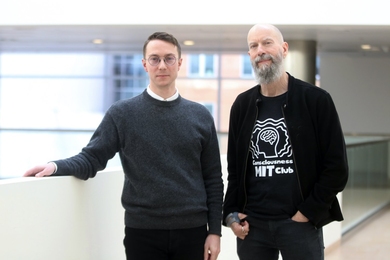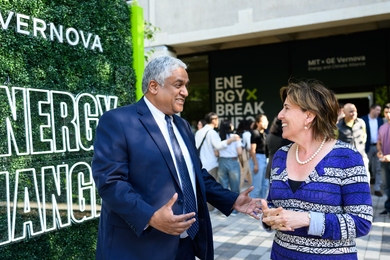CAMBRIDGE, Mass.--MIT President Charles M. Vest today thanked Rep. Peter G. Torkildsen (R-Mass.) for the Congressman's prompt action to try to restore a House subcommittee cut of $18.6 million that may close the nation's William H. Bates Linear Accelerator in Middleton, Mass. and eliminate the nuclear physics research projects of many professors and doctoral students on the MIT campus.
Dr. Vest, in a statement released by his office, said, "I want to thank Congressman Torkildsen for his prompt action in recognizing the interest of science and education in our country. MIT is committed to continue to work with him on this issue of national significance. We are hopeful that it can be turned around.
"The cut in funding would halt the education of 22 MIT graduate students and 30 students from other universities, eliminate the jobs of 122 people at the accelerator, and halt the funding for many faculty projects on the MIT campus in Cambridge. It would stop the work of 250 scientists throughout the nation who use this national facility. We are very concerned. I am most grateful to Congressman Torkildsen for his personal intervention to try to restore these funds," Dr. Vest said.
(The amendment advocated by Rep. Torkildsen failed, on a 12-12 vote, to reverse the cut. The measure has yet to be approved by the full House Science Committee, the full House of Representatives, and the Senate.)
The Bates accelerator is a national facility, operated by MIT for the Department of Energy.
Robert Redwine, professor of physics and director of the MIT Laboratory for Nuclear Science, which includes Bates, commented: "The Bates Accelerator has pioneered in precision. Part of the Bates complement of detectors is the world's highest resolution magnetic spectrometer for measuring particle energy. The accelerator has also been used for calibration for other research tools, such as a high energy gamma ray detector which is now operating on the gamma ray observatory satellite.
"The Bates Accelerator is an important national and international research tool for the study of nuclei and nucleons (protons and neutrons) using the electron probes. The facility has recently had its capability upgraded through the addition of a stretcher/storage ring at the end of the linear accelerator (LINAC). This will allow unique experiments in this important research area which seeks to understand the details of nuclear structure and nuclear interactions.
"Continuation of research at Bates will capitalize on the nation's recent investment in new research tools and the young scientists who are being trained to use them," Professor Redwine said.
The Linear Accelerator in Middleton was authorized by Congress in 1965 at the urging of Congressman William H. Bates (R-Mass.), a strong advocate for basic science. Following his sudden death at the age of 52 in 1969, MIT named the facility in his honor.





